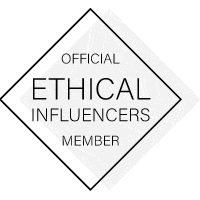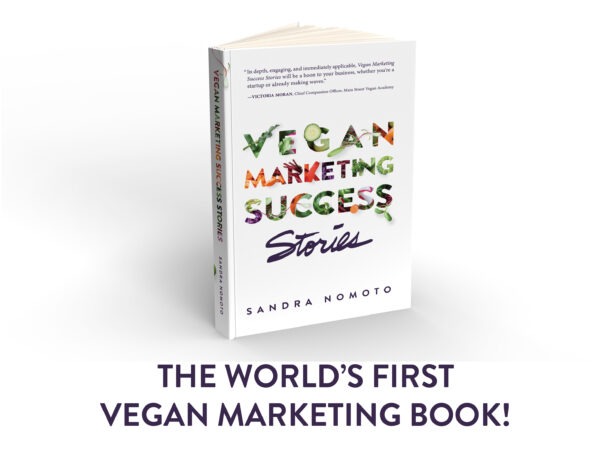A breakdown of the year leading up to your book launch date
After catching up with an old colleague a few months ago, I learned recently she was writing a book with her business partner. She asked me how much time she needed for every phase of the journey if they were to self-publish their book, from writing to marketing, and that gave me some inspo for this blog post.
I documented my year-long journey writing Vegan Marketing Success Stories in four parts: Part 1 | Part 2 | Part 3 | Part 4
While every author’s book journey’s going to be slightly different, you can do it in a year, and this is an example of what that timeline might look like:
Months one to three: Writing the book
You will obviously have the idea for your book before you start the process. If you don’t, come up with a book topic.
Then, create an outline for the book. Think of it like the high-level table of contents, even if you might shift chapters around later. Each main topic in the outline will have sub-ideas underneath it. Think one topic per chapter and then multiple sections in each chapter.
When you have your outline, start writing the book. That doesn’t mean sit down and type. If you’re a better speaker or if ideas come to you better when you speak, you can voice record yourself and transcribe it into text. I use Otter.ai with all the clients I record and ghostwrite for.
My colleague Mitali at The Vegan Publisher recommends all authors record themselves because it will capture your speaking voice better, but I didn’t record an ounce of my speaking voice. I’m a writer, so I put my first draft down in Google Docs and then read my book aloud.
I’m allotting 3 months to writing your book. It might take shorter or longer. If shorter, you can do a read-aloud of your book, which I recommend to help you revise your content. It’s like doing a self-edit.
If you don’t want to write or narrate your book, hire a ghostwriter or co-author. (Co-authors typically get paid in advance and do the majority of the writing.)
When I work with authors as a ghostwriter, we hop on one-hour Zoom sessions. Talking at average speed, we can get 5000 words down in one session. A book is a minimum of 30,000 words, which means we could have a book in as little as six sessions, or six weeks, if you commit to a weekly schedule.
If you want your ghostwriter to change the language compared to how you narrated it, you’ll have to pay them for more time.
At this time, you’ll want to find your editor(s). If you write fiction or memoir, you may want to hire a developmental/structural editor who will re-order your chapters/sections. At minimum, you’ll need to hire a copyeditor. If you’re writing nonfiction, your copyeditor will check facts and ensure your references are formatted correctly.
If you’re having trouble with the book idea, outline, and/or writing of the book, hiring a book coach might help you move forward faster. A 30 or 60-minute session with me could help.
Get your ISBNs for every format you plan to publish.
Months four to six: Editing
If you’re writing nonfiction, it might be a good idea to have beta readers read your manuscript. Give them a month to read an electronic version and a set of up to 10 questions to answer that will elicit their feedback on this version. I found beta readers to be helpful in my second book.
You can have beta readers for a fiction book too, but I think it’d be more beneficial if you’ve already written one book in a series, so they have some context for what’s coming next.
If you hired a ghostwriter or co-author to write your book for/with you, now’s the time to read it yourself and ask for changes.
Then hand your manuscript to your editor(s), who should be able to edit your book within 3 months. If you don’t have a budget for an editor, run it through the paid version of a program like Grammarly or ProWritingAid to self-edit. You don’t want spelling and grammar errors appearing, as that will lower your online book ratings.
Hire your cover designer.
Months seven to eight: Formatting & cover design
Hire a formatter if you’re not formatting your own book. I think an author could learn to format their own print version, but ebook is a different beast. I think you can hire an ebook formatter through Amazon KDP, but I haven’t tried. I formatted both my print and book.
Formatting can be done in two months. If the book is long or there are lots of images and footnotes, add another month to the time.
Your cover needs to be done before formatting is completed because if you hired a good formatter, they’ll make sure the interior title page matches the cover.
Month nine: Proof, audio, marketing strategy
Once you’ve got your cover, print, and ebook files, order a physical proof through your publishing platform. Minimum ship time for a proof is 3 weeks, unless you pay more to get it faster.
If you need to make cover or formatting changes after seeing your book proof, do so. Then order as many books as you need for your physical launch and/or retail sales.
When editing is completed, you can start working on the audio version of your book if you plan to sell one. You’ll either narrate it yourself or hire a narrator. If you narrate it, go to a professional recording studio unless you have a great microphone and a soundproof room where you can record. (Recording in a closet works, but have a pro mic so your audio version sounds as crisp as possible.)
Then you’ll need to hire an audio editor & sound engineer (if not the same person) to make sure the audio files are compatible with ACX (which feeds to Audible) or whatever platform you choose to distribute your audio book.
At this time, you’ll want to secure your publicist or public relations/marketing agency and develop your marketing and media outreach strategy. This should also include your advertising budget and strategy for reaching out to influencers for reviews.
Plan your physical book launch, which may include a reading (or Q&A with someone) and signing. (You can do a tour if you’re that big time).
Plan your content strategy, including social media, blogs, and emails. My marketing strategist gave me a 90-day content strategy that included daily social media posts, weekly blogs, and weekly e-blasts. I actually extended it by another month.
And yes, this is necessary to spread the word about your book. Remember, you’re competing with all the traditionally published books at bookstores out there, so people will need to learn about your book in all the ways possible.
Consider producing a trailer for the book to build anticipation on YouTube and on social media.
Check out this post to learn about James Clear’s strategy for marketing and selling Atomic Habits.
Months ten and eleven: Pre-launch marketing
Release your book trailer if you made one.
You’ll begin your media strategy and doing interviews.
Approach the influencers with an ebook copy (maybe even hard copies if you’re able to get them this far in advance of your launch date) to get them to review the book.
Start posting daily on social media and purchasing digital ads. Post weekly blogs and send weekly emails.
Month twelve: Book launches
Continue posting daily on social media, running digital ads, posting weekly blogs, and sending weekly emails.
Continue your media and influencer strategies and doing interviews.
If you’ve organized a physical launch event, that will happen.
You can stagger your formats and launch the paperback (or hardcover) first and then release the ebook a month later, followed by the audio, but I’d recommend self-publishing authors release the paperback + ebook simultaneously (to capture online sales from readers who don’t live where you do) and then the audio version 3 months after the initial book launch. Visit the blog I did here on staggering book formats.
Then for the next year (or more!), you’ll continue to do media interviews and can do other methods of marketing and advertising. Visit this blog on additional paid methods of promoting your book.
Need a coach, ghostwriter, editor, formatter, or marketer to help you publish your book so you can get it in the hands of readers? Read more about my services here and contact me if you’re ready to begin!






